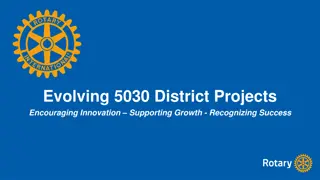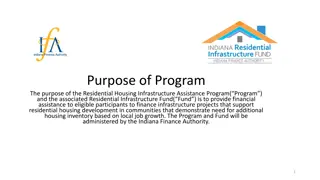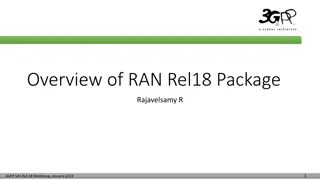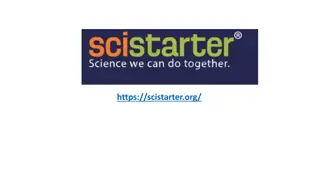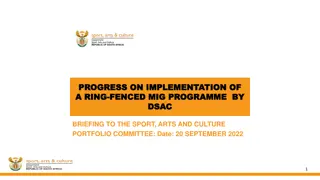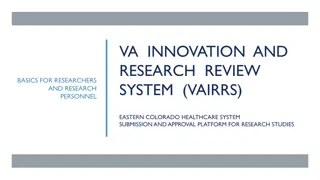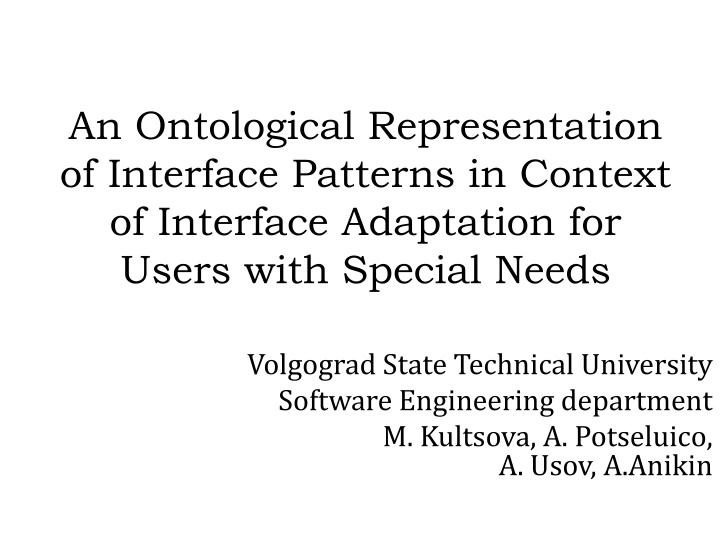
Ontological Representation of Interface Patterns for Users with Special Needs
Explore an ontological representation of interface patterns in the context of interface adaptation for users with special needs. Understand the main problems faced by developers and delve into user-centered design principles. Discover the concept of adaptive interfaces creation and description of the meta-ontology for ontological modeling.
Download Presentation

Please find below an Image/Link to download the presentation.
The content on the website is provided AS IS for your information and personal use only. It may not be sold, licensed, or shared on other websites without obtaining consent from the author. If you encounter any issues during the download, it is possible that the publisher has removed the file from their server.
You are allowed to download the files provided on this website for personal or commercial use, subject to the condition that they are used lawfully. All files are the property of their respective owners.
The content on the website is provided AS IS for your information and personal use only. It may not be sold, licensed, or shared on other websites without obtaining consent from the author.
E N D
Presentation Transcript
An Ontological Representation of Interface Patterns in Context of Interface Adaptation for Users with Special Needs Volgograd State Technical University Software Engineering department M. Kultsova, A. Potseluico, A. Usov, A.Anikin
The main problems of developers 1) Problem of collecting information about users disabilities and added problems 2) Problem of understanding the end users needs 3) Problem of setting properties of UI- components 4) Problem of misunderstanding the value of changing interface in real time 2
User-Centered Design* Fundamental principles of User- Centered Design: 1. Ensure the project understands what the users want or need to achieve and the environment in which they work or live. 2. Ensure the designers know who the users are and how the system should fit into their lives or their work. 3. Make the demonstration of the software prototype as soon as possible. 4. Have a flexible team that can understand and address all aspects of the users experience with the system. *ISO 9241-210:2009 3
The concept of adaptive interfaces creation Quality model of software products (ISO9126) : functionality portability maintainability efficiency reliability usability Usability of an interface(ISO9241): effectiveness efficiency user satisfaction 4
Description of the meta-ontology Requirements for the ontological model: 1) The ontology must represent the user's disorders and their degrees 2) The ontology must represent sets of widgets for input and output of information on the interface 3) The ontology must represent the characteristics of the user's device 4) The ontology must represent user problems on the current interface 5) The ontology must represent solutions to the problems of interaction problems between user and interface Meta-ontology (IDEF5) M=< OM, C, Inst, R, I >, where M meta-ontology; OM={OUser, ODis, OInt, ODev} set of ontologies, OUser- user ontology, ODis- ontology of user s disorders, OInt ontology of interface, ODev ontology of device; C the final set of meta-ontology concepts, C= ; Inst the final set of meta-ontology instances, Inst= ; R = {has, impacts on} the final set of meta-ontology relations between instances; I the final set of interpretation rules, I= . 5
Description of improved the meta-ontology Requirements for the ontological model: 1) The ontology must represent the user's disorders and their degrees 2) The ontology must represent sets of widgets for input and output of information on the interface 3) The ontology must represent the characteristics of the user's device 4) The ontology must represent user problems on the current interface 5) The ontology must represent solutions to the problems of interaction problems between user and interface 6) The ontology must represent the database of patterns Improved Meta-ontology (IDEF5) M=< OM, C, Inst, R, I >, where M meta-ontology; OM={OUser, ODis, OInt, Odev,, Op,} set of ontologies, OUser- user ontology, ODis- ontology of user s disorders, OInt ontology of interface, ODev ontology of device, OP ontology of patterns; C the final set of meta-ontology concepts, C= ; Inst the final set of meta-ontology instances, Inst= ; R = {has, impacts on, interacts with, changes, sends data} the final set of meta-ontology relations between instances; I the final set of interpretation rules, I= . 6
Model of the interface pattern P = < N, Pr, C, S>, where N name of a pattern; Pr the problem solved by this pattern; C pattern condition; S the solution applied to the interface. Name of the pattern Increasing the size of the widget Problem People with moderate and severe motor disability can click around the widget instead of clicking on it. Condition IF (user. hasProblem(Moderate Tremor) OR user. hasProblem(Severe Tremor)) AND ClickCount > 3 Solution Widget.Increase Size(25%) IF Widget.hasTextComponent() {Widget.IncreaseTextComponent(25%)} 7
New Pattern Representation The process of pattern applying 8
Tracking events Click on the widget event Click on the area near widget event Time between clicking on the same widget Time of pressing any interactive widget Time of typing text in text widgets Time between text appearing and any response on it Time of task performing 9
New Pattern Representation The relationships between meta-ontology concepts(IDEF5) 10
Pattern Types 11 The ontology model of pattern types(IDEF5)
Attribute Pattern 12 The ontology model of Attribute Pattern(IDEF5)
View Pattern 13 The ontology model of View Pattern(IDEF5)
Exchange Pattern The ontology model of exchange pattern(IDEF5) 14
Plans for the future work Bug-fix of the system Improvement of interface for developers Adding database of patterns and change pattern representation inside the system Adding mechanism of collecting user actions Implementing system for applying interface patterns 15
Approbation of the work The main provisions of the thesis were presented at four conferences: XX Regional Conference of Young Researchers of the Volgograd Region (Volgograd, December 8-11, 2015) - 3rd place The 53rd Scientific Intra-University Conference (Volgograd, Feb. 5, 2016) 7th International Conference on Information, Intelligence, Systems and Applications (IISA) (Chalkidiki, Greece 13-15 July 2016) Student competition of student work (Volgograd, May 16, 2017) - 1st place 16








